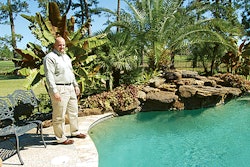“Some 60 to 70 percent of the planet’s fresh water supply is used to irrigate food crops and landscaped areas around buildings.”
Facing mandates from the Energy Independence and Security Act of 2007 and a 2009 executive order from President Obama, federal government agencies are working to reduce energy and potable water consumption in their buildings.
Compliance should help these agencies cut their costs and carbon footprints. But for the State Department, which manages some 19,000 buildings at 275 missions worldwide, the work takes on an added dimension. As a guest in a host nation, a mission is encouraged to demonstrate a consideration for local energy and water resources through an approach that the department calls “ecodiplomacy.”
“Everything we do can be seen as a political statement,” said Melanie Berkmeyer, an architect with the State Department’s Bureau of Overseas Building Operations. “So we have to be sensitive to the local environment and local populations.”
Ms. Berkmeyer spoke during a presentation on ecodiplomacy at the recent International Greenbuild Conference in San Francisco.
No environmental issue is more local or visible than water usage, Ms. Berkmeyer said, especially in regions with little or no reliable access to clean drinking water. So as part of its green diplomacy goals, the department aims for net-zero water usage for its buildings wherever possible. This means becoming completely independent from the local municipal water supply.
Read the full article here.
By Jim Witkin










